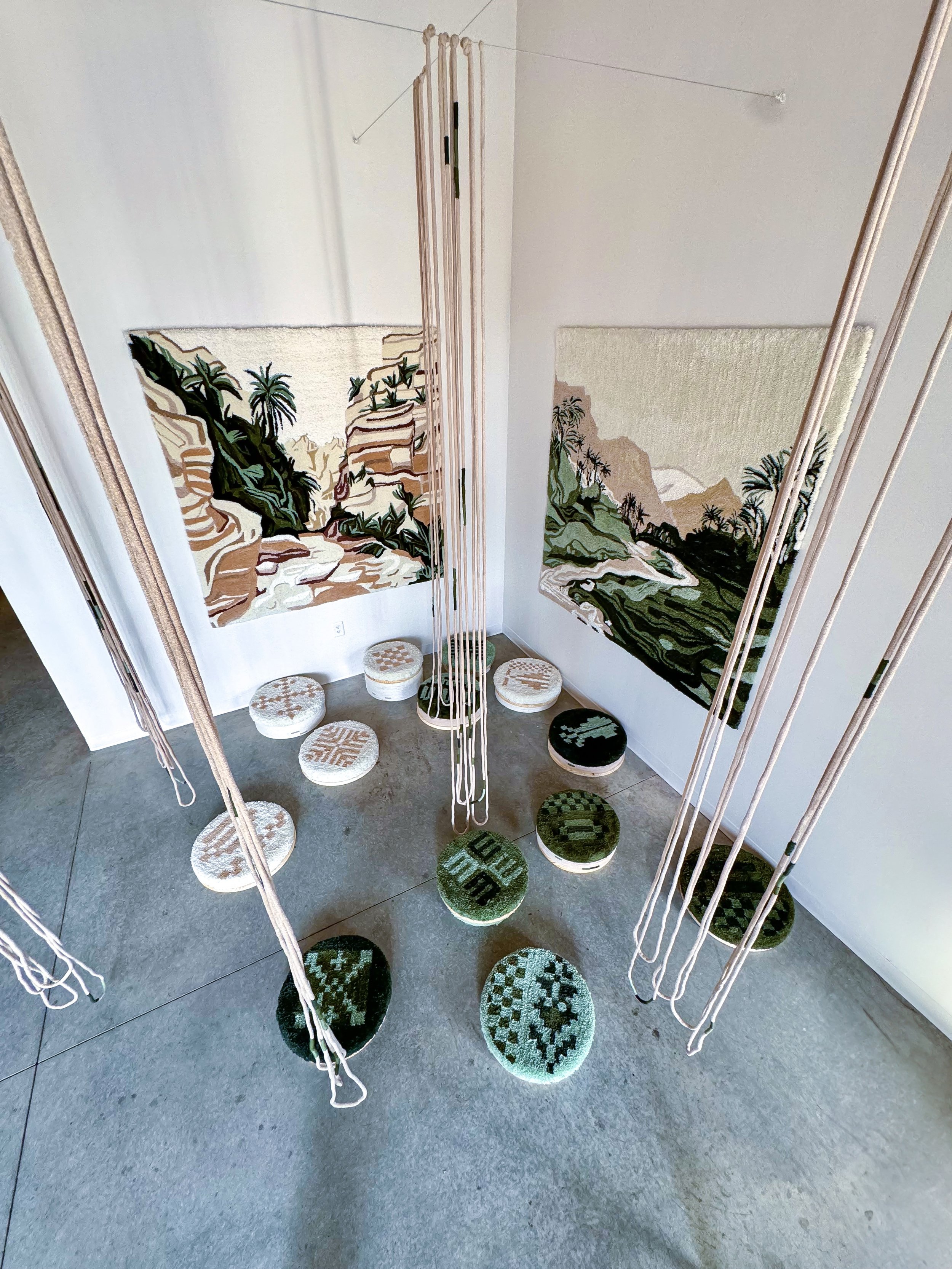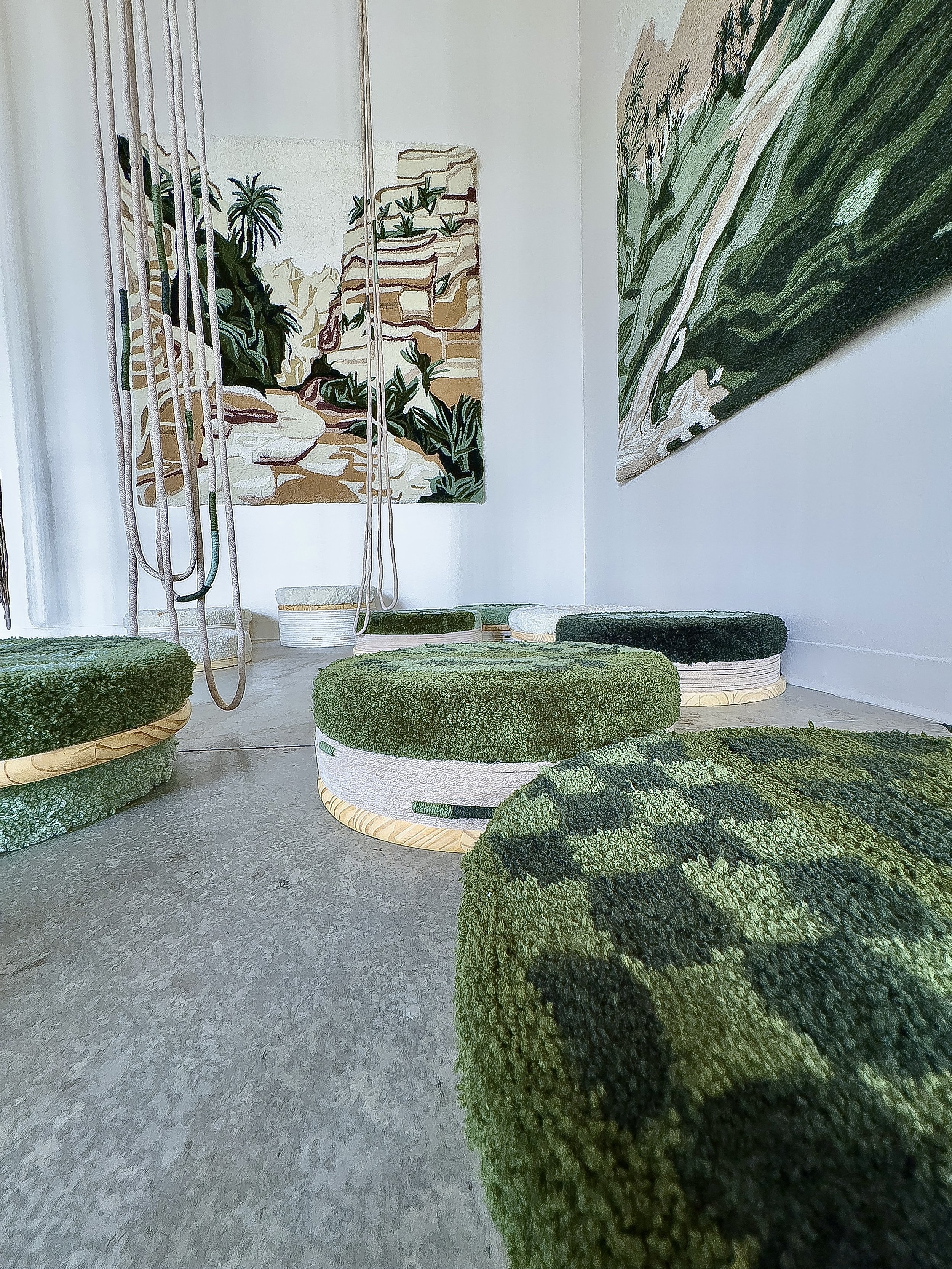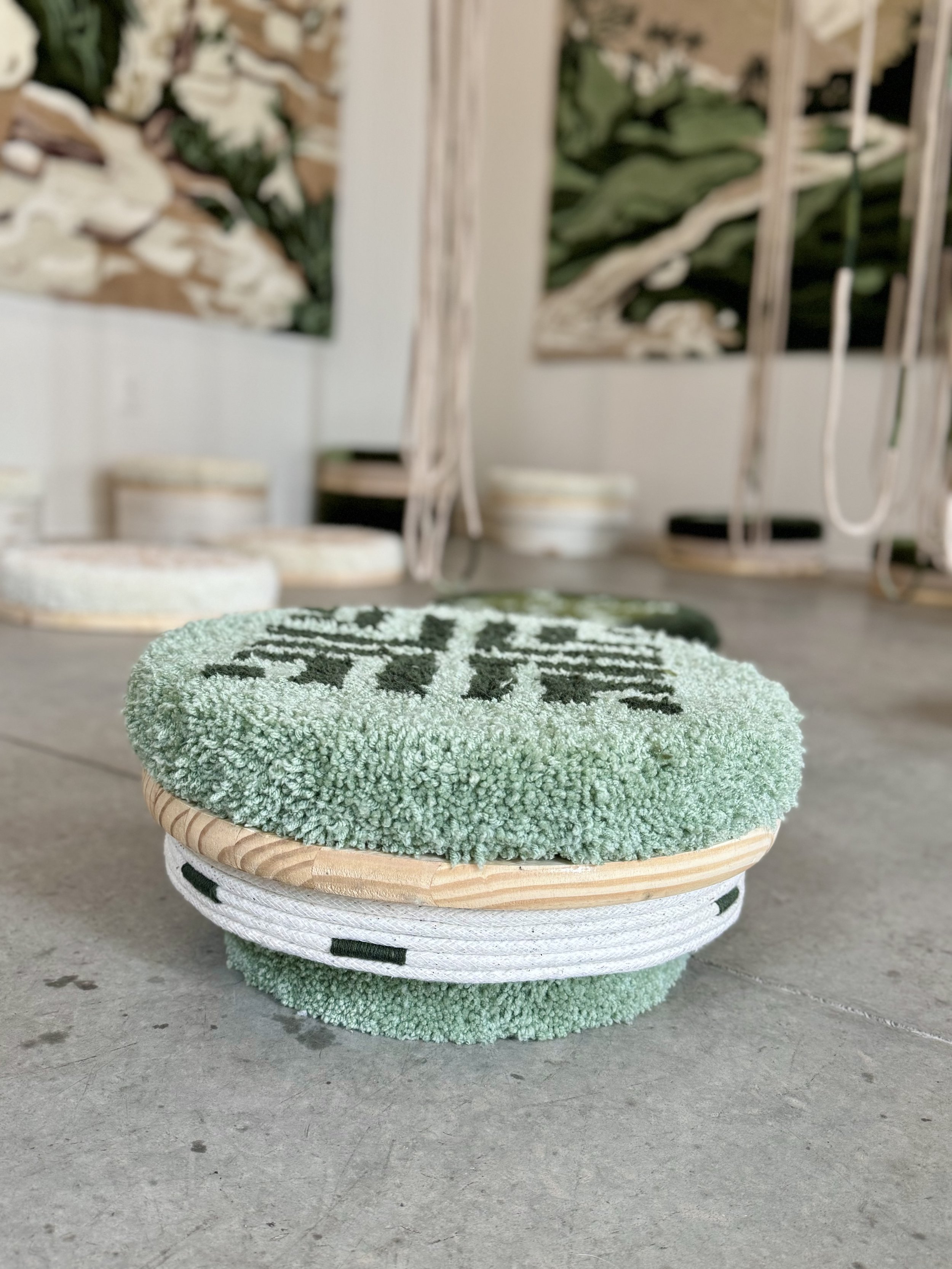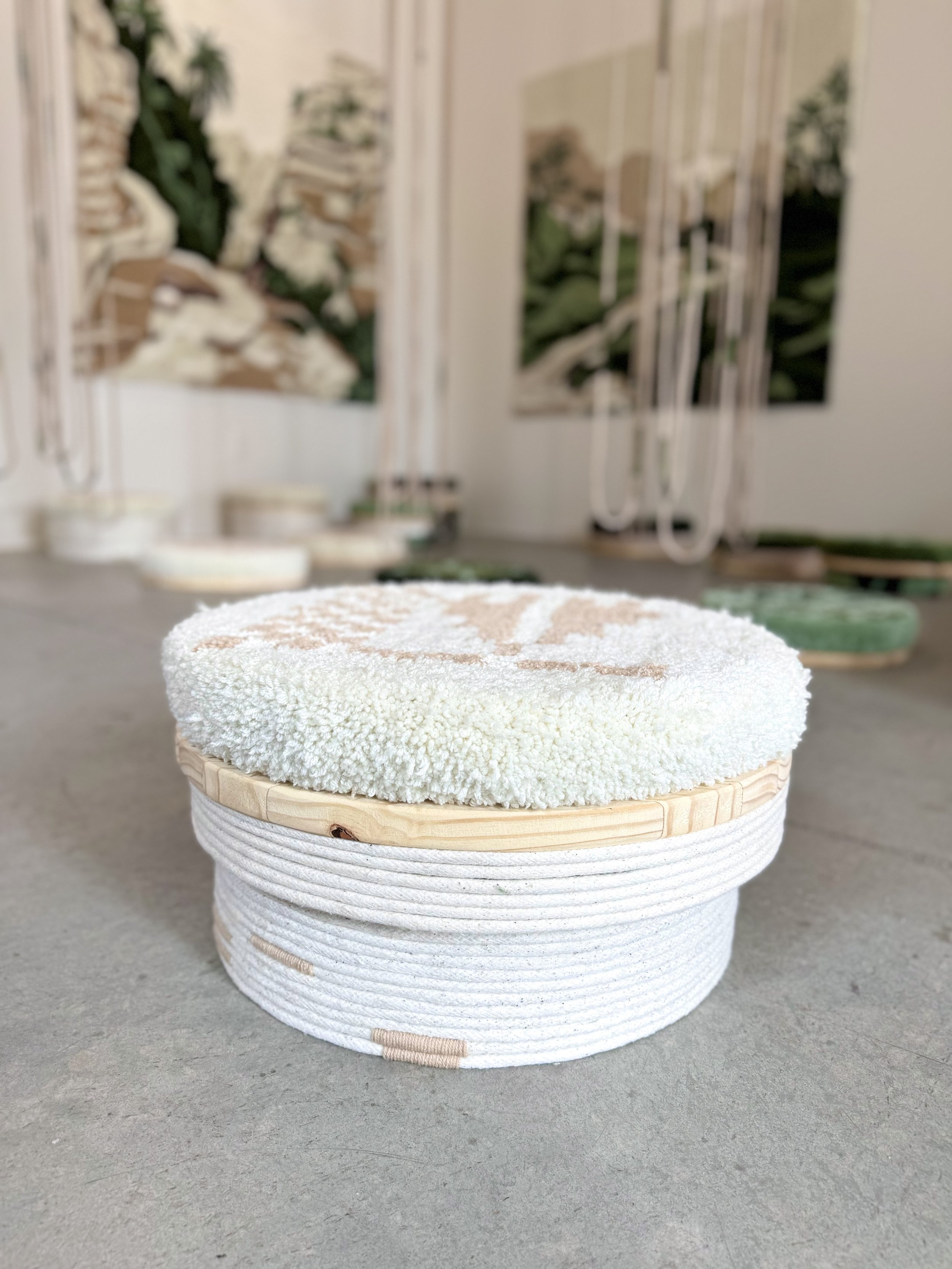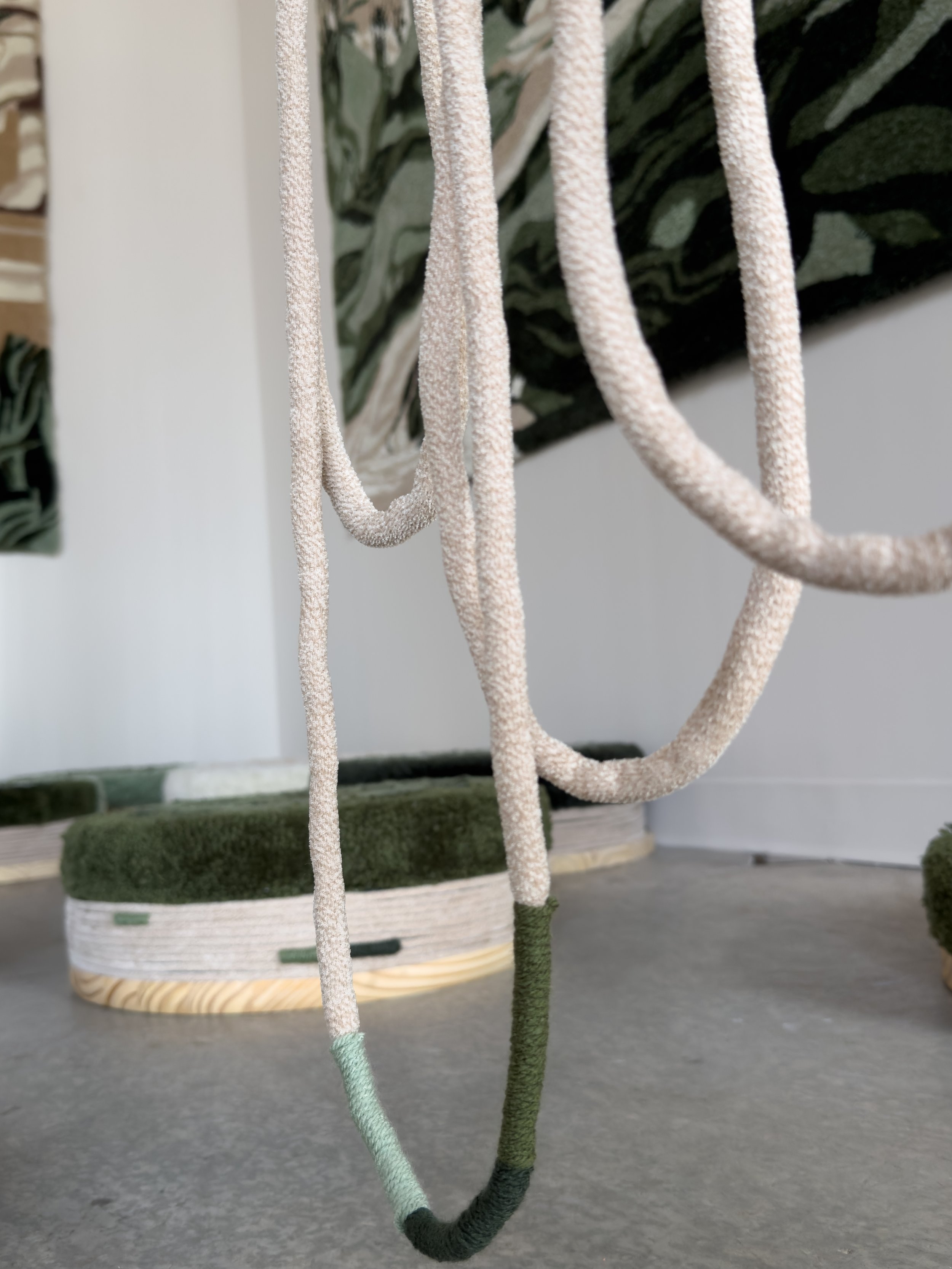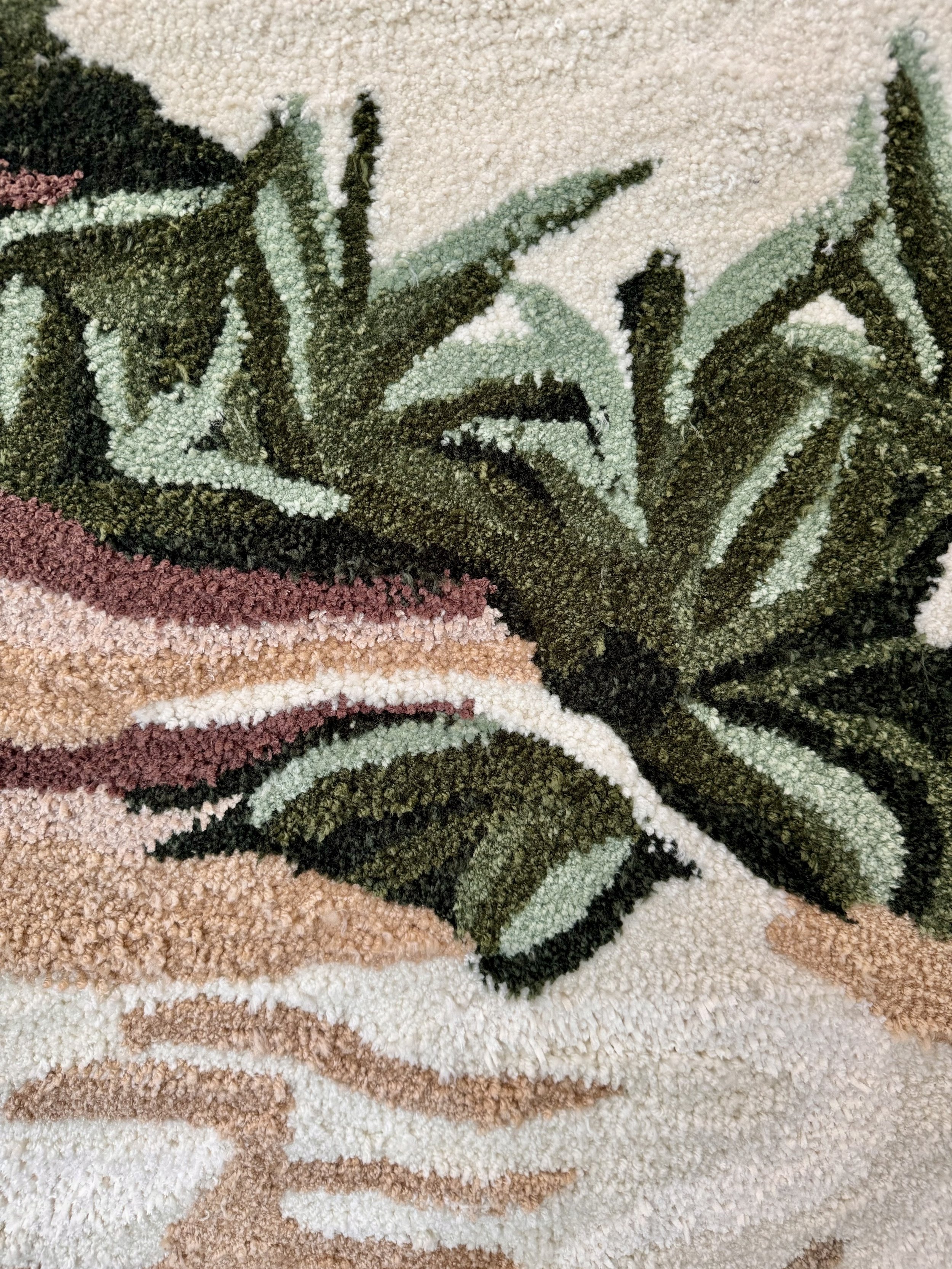UNFORTUNATELY, IT WAS PARADISE
-
Wadi Feiran: 71 x 71 x 2 in
Wadi Bin Hammad: 71 x 71 x 2 in
Wadi Feiran II: 71 x 71 x 2 in
13 Tatreez Dwelling Spots: 20 x 20 x 5 to 14 in; 17 x 17 x 5 to 8 in (dimensions vary)
7 Suspensions: 108 x 5 to 7 x 2 in (dimensions vary)
Acrylic yarn, felt, foam, ancestral wisdom, felt, memory, cotton cord, poplar, embroidery floss
-
Unfortunately, It Was Paradise is an immersive installation that invites viewers into a dwelling place inspired by landscapes and motifs of the Levant and North Africa. Composed of hand tufted and woven pieces that are anchored, grounded and suspended, it references archival and current photographs of Wadi Feiran and Wadi Bin Hammad, tatreez embroidery patterns, and arrangements of communal gathering and dwelling amidst forced displacement and historical erasure.
Wadi Feiran and Wadi Bin Hammad are oases that exist within desert landscapes. The English word, oasis comes from wahe or ouahe (Demotic Egyptian (c. 650 BC – 5th century AD)), which means a "dwelling place." As such, the existence of people in the land is embedded within the definition of the place. It inherently resists erasure. Functioning as relational art, in this dwelling space, carpeted dwelling spots are installed at varying heights on and low to the ground. As viewers are invited to sit within the installation, they commune with each other in a grounded way as if sitting on rocks in the wadis or in a majlis. The layered patterns on the seats reference tatreez embroidery symbols and encoded iconography found in and near the wadis. This communal gathering space is one where people can anchor and reground themselves. Simultaneously, it is a space on the cusp of nostalgia and comfort as we witness current events unfolding. Ultimately, though, this installation beckons ancient realities, grounded in the earth.
-
This work is activated by communal engagement. As viewers are invited to sit within the installation, they commune with each other in a grounded way as if sitting on rocks in the wadis or in a majlis. The Arabic term majlis comes from the root ja-la-sa, which means to sit. It literally means a sitting place and in the Islamic tradition it also means council. It is a way to describe various types of special gatherings. Across the region and diaspora, it’s designed in different shapes and forms. However, historically, it is a place of hospitality; of conversation where communities gather to celebrate together; where we resolve issues and exchange ideas and news. It could be in someone’s home, or created onsite at a specific location. Here, the work is activated by the presence of community; the act of communing together is the art.







